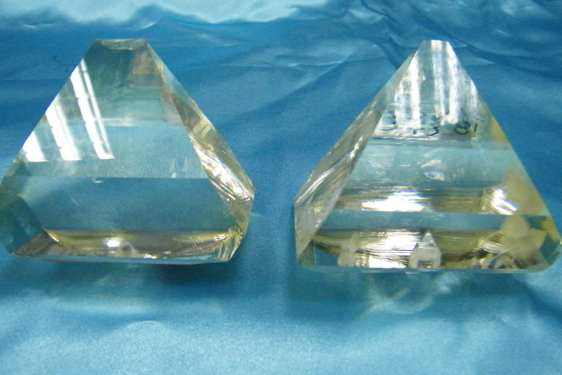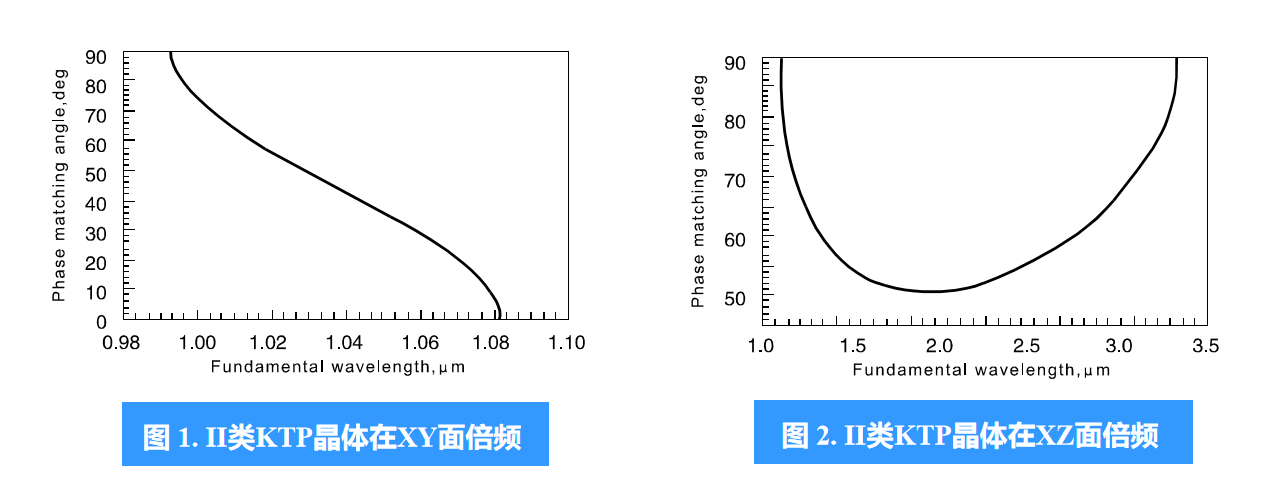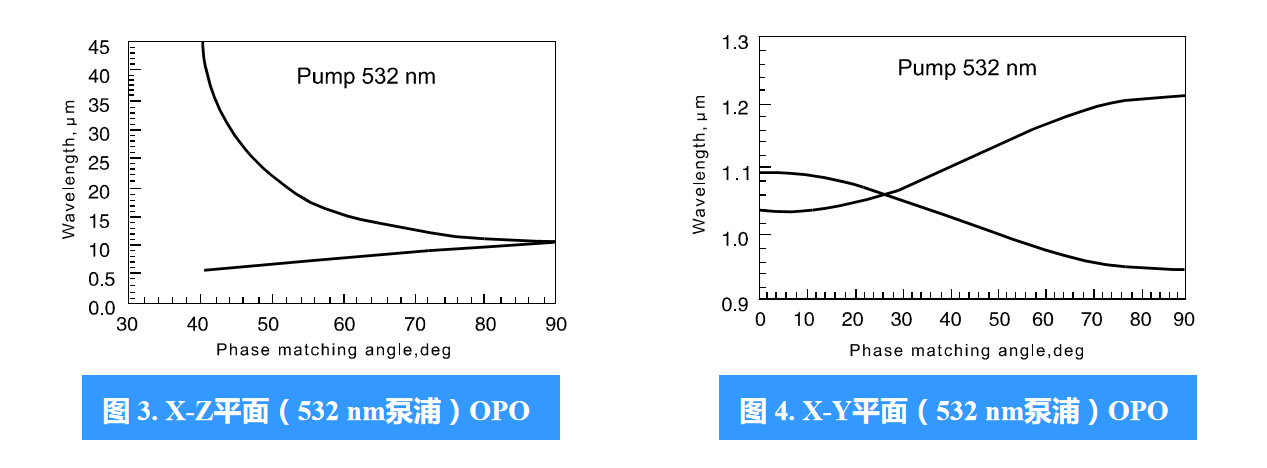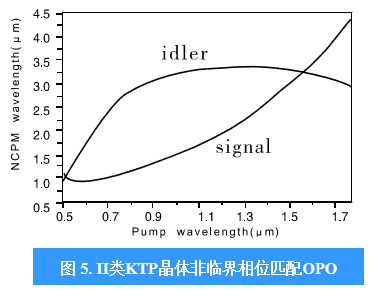banner
EO crystal
optical crystal

Potassium Titanyl Phosphate (KTiOPO4, KTP) is a high-performance frequency doubling crystal, which is widely used in commercial and scientific research, including laboratories, medical systems, range detectors, lidars, optical communications, and industrial laser systems.
Potassium Titanyl Phosphate crystals (KTiOPO4, KTP) are widely used in commercial and scientific research, including laboratory and medical laser systems, rangefinders, lidars, optical communications, and industrial laser systems.
|
Crystal Structure
|
Orthorhombic system, space group Pna21, point group mm2
|
|
Unit Cell Parameters
|
a = 6.404 Å, b = 10.616 Å, c = 12.814 Å, Z = 8
|
|
Melting Point
|
Approximately 1172 ℃
|
|
Mohs Hardness
|
5 Mohs
|
|
Density
|
3.01 g/cm3
|
|
Thermal Conductivity
|
13 W/m/K
|
|
Coefficient of Thermal Expansion
|
αx = 11×10-6 /℃, αy = 9×10-6 /℃, αz = 0.6×10-6 /℃
|
|
Transmission Range
|
350-4500 nm
|
|
|
SHG Phase Matching Range
|
497-1800 nm (Type Ⅱ)
|
|
|
Thermo-Optic Coefficient (λ unit μm)
|
dnx/dT = 1.1×10-5 /℃
dny/dT = 1.3×10-5 /℃
dnz/dT = 1.6×10-5 /℃
|
|
|
Absorption Coefficient
|
<0.1%/cm @ 1064 nm, <1%/cm @ 532 nm
|
|
|
Type II SHG of 1064 nm Nd:YAG Laser
|
Temperature Bandwidth
|
24 ℃·cm
|
|
Acceptance Spectral Width
|
0.56 nm·cm
|
|
|
Acceptance Angle
|
14.2 mrad•cm (Φ); 55.3 mrad•cm (θ)
|
|
|
Walk-off Angle
|
0.55°
|
|
|
NLO Coefficient
|
deff(Ⅱ)≈(d24 - d15)sin2Φsin2θ - (d15sin2Φ + d24cos2Φ)sinθ
|
|
|
Non-zero Nonlinear Optical Coefficient
|
d31 = 6.5 pm/V d24 = 7.6 pm/V
d32 = 5 pm/V d15 = 6.1 pm/V
d33 = 13.7 pm/V
|
|
|
Sellmeier Equation (λ unit μm)
|
nx2 = 3.0065 + 0.03901 / (λ2 - 0.04251) - 0.01327 λ2
ny2 = 3.0333 + 0.04154 / (λ2 - 0.04547) - 0.01408 λ2
nz2 = 3.3134 + 0.05694 / (λ2 - 0.05658) - 0.01682 λ2
|
|
|
Electro-Optic Coefficient
r13
r23
r33
r51
r42
|
Low Frequency (pm/V) High Frequency (pm/V)
9.5 8.8
15.7 13.8
36.3 35.0
7.3 6.9
9.3 8.8
|
|
|
Dielectric Constant
|
ɛeff = 13
|
|



| Material | ε | N | Phase | Amplitude | ||||
|
R
(pm/V)
|
K
(10-6/℃)
|
N7r2/ε
(pm/V)2
|
r
(pm/V)
|
K
(10-6/℃)
|
n7r2/ε
(pm/V)2
|
|||
| KTP | 15.42 | 1.80 | 35.0 | 31 | 6130 | 27.0 | 11.7 | 3650 |
| LiNbO3 | 27.90 | 2.20 | 8.8 | 82 | 7410 | 20.1 | 42.0 | 3500 |
| KD*P | 48.00 | 1.47 | 24.0 | 9 | 178 | 24.0 | 8.0 | 178 |
| LiIO3 | 5.90 | 1.74 | 6.4 | 24 | 335 | 1.2 | 15.0 | 124 |
| Material | r(pm/V) | n | εeff (ε11ε33)1/2 | n3r/εeff (pm/V) |
| KTP | 35 | 1.86 | 13 | 17.30 |
| LiNbO3 | 29 | 2.20 | 37 | 8.30 |
| KNbO3 | 25 | 2.17 | 30 | 9.20 |
| BNN | 56 | 2.22 | 86 | 7.10 |
| BN | 56-1340 | 2.22 | 119-3400 | 5.1-0.14 |
| GaAs | 1.2 | 3.60 | 14 | 4.00 |
| BaTiO3 | 28 | 2.36 | 373 | 1.00 |
| Size Tolerance |
(W±0.1 mm)×(H±0.1 mm)×(L+0.5/-0.1 mm) (L≥2.5 mm)
(W±0.1 mm)×(H±0.1 mm)×(L+0.1/-0.1 mm) (L<2.5 mm)
|
| Effective Aperture | 90% of the central area |
| Internal Quality | No visible scattering path or center detected by 50 mW green light |
| Surface Finish | 10/5, referring to MIL-PRF-13830B standard |
| Flatness | ≦λ/8 @ 633 nm |
| Transmission Wavefront Distortion | ≦λ/8 @ 633 nm |
| Parallelism | 20″ |
| Perpendicularity | ≦15′ |
| Angle Tolerance | ≦0.25° |
| Chamfer | ≦0.2 mm×45° |
| Edge Chipping | ≦0.1 mm |
| Damage Threshold |
>1 GW/cm2 @ 1064 nm, 10 ns, 10 Hz (Anti-reflection Coating)
>0.3 GW/cm2 @ 532 nm, 10 ns, 10 Hz (Anti-reflection Coating)
|
| Quality Assurance Period | One year (under normal use) |